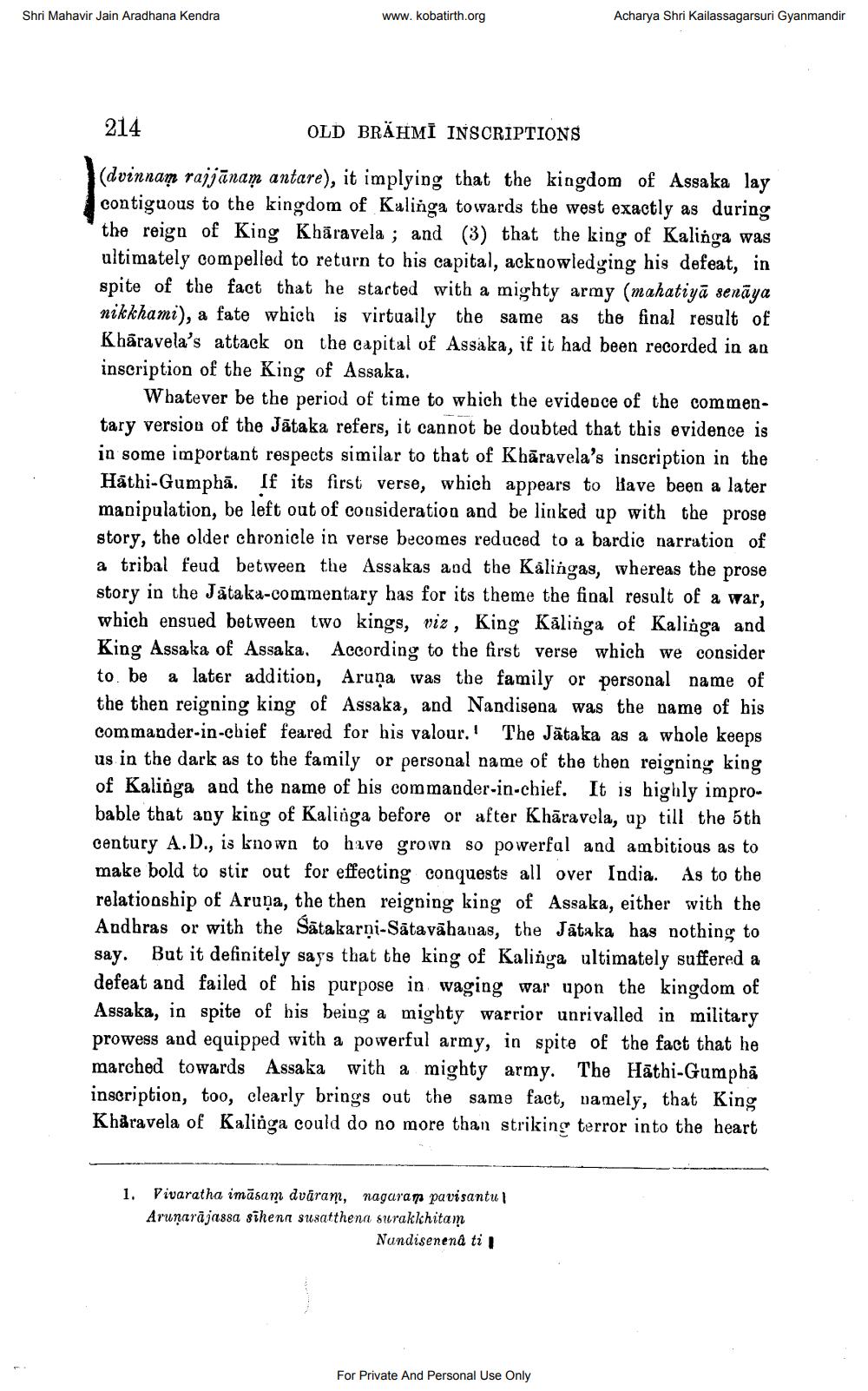________________
Shri Mahavir Jain Aradhana Kendra
www.kobatirth.org
Acharya Shri Kailassagarsuri Gyanmandir
214
OLD BRÄHMI INSCRIPTIONS
(dvinnam rajjānam antare), it implying that the kingdom of Assaka lay contiguous to the kingdom of Kalinga towards the west exactly as during the reign of King Khāravela ; and (3) that the king of Kalinga was ultimately compelled to return to his capital, acknowledging his defeat, in spite of the fact that he stacted with a mighty army (mahatiyā senāya nikkhami), a fate which is virtually the same as the final result of Khâravela's attack on the capital of Assaka, if it had been recorded in an inscription of the King of Assaka.
Whatever be the period of time to which the evidence of the commentary version of the Jātaka refers, it cannot be doubted that this evidence is in some important respects similar to that of Khāravela's inscription in the Hāthi-Gumphā. If its first verse, which appears to have been a later manipulation, be left out of consideration and be linked up with the prose story, the older chronicle in verse becomes reduced to a bardic narration of a tribal feud between the Assakas and the Kalingas, whereas the prose story in the Jātaka-commentary has for its theme the final result of a war, which ensued between two kings, viz, King Kālinga of Kalinga and King Assaka of Assaka. According to the first verse which we consider to be a later addition, Aruna was the family or personal name of the then reigning king of Assaka, and Nandisena was the name of his commander-in-chief feared for his valour.! The Jātaka as a whole keeps us in the dark as to the family or personal name of the then reigning king of Kalinga and the name of his commander-in-chief. It is highly improbable that any king of Kalioga before or after Khāravela, up till the 5th century A.D., is known to have grown so powerfal and ambitious as to make bold to stir out for effecting conquests all over India. As to the relationship of Aruņa, the then reigning king of Assaka, either with the Andhras or with the Sātakarni-Sātavāhanas, the Jātaka has nothing to say. But it definitely says that the king of Kalinya ultimately suffered a defeat and failed of his purpose in waging war upon the kingdom of Assaka, in spite of his being a mighty warrior unrivalled in military prowess and equipped with a powerful army, in spite of the fact that he marched towards Assaka with a mighty army. The Hāthi-Gumphā inscription, too, clearly brings out the same fact, namely, that King Khåravela of Kalinga could do no more than striking terror into the heart
1. Vivaratha imāsam dvāram, nagaram pavisantu 1 Arunarājassa sihenn susatthena surakkhitam
Nandisenenä til
For Private And Personal Use Only




